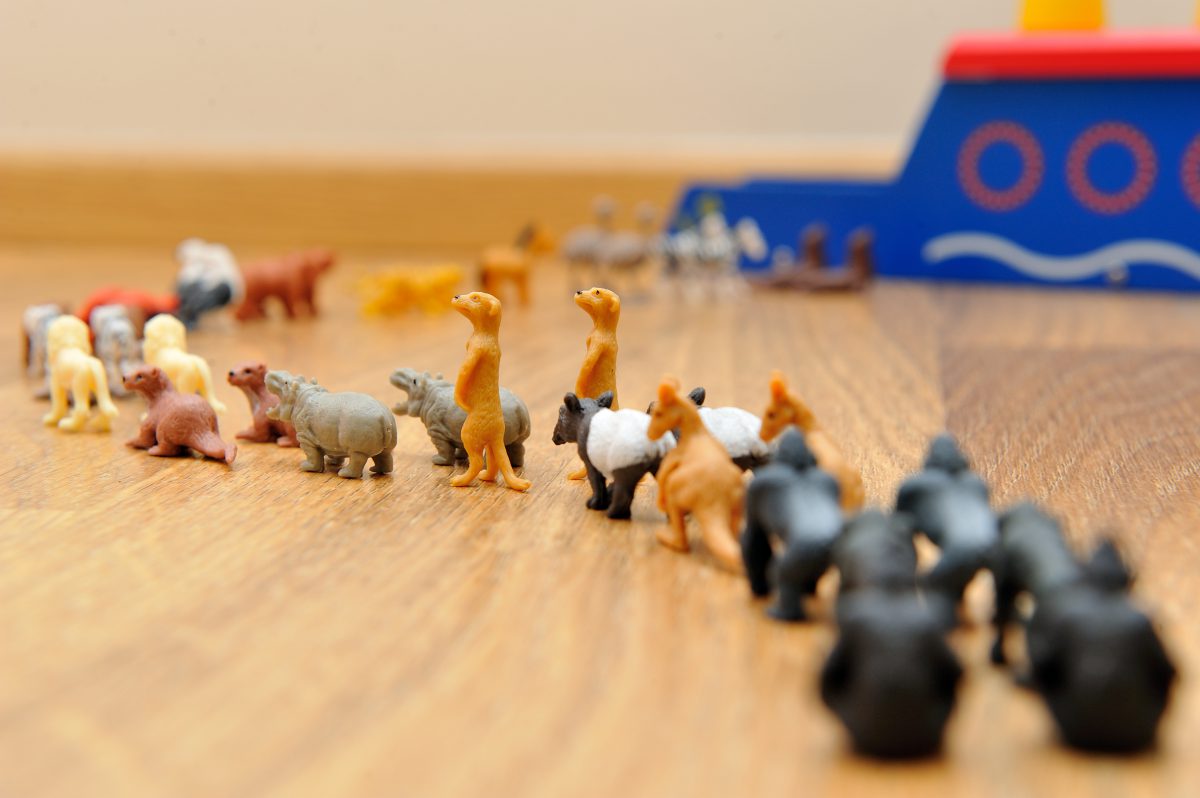Most of us are familiar with the story of the global flood that Noah and his family survived by building an ark as […]

Most of us are familiar with the story of the global flood that Noah and his family survived by building an ark as instructed by God. A common question asked about the biblical flood story is how the ark could have held all the different animals we see today. No one has a list of the animals that were on the ark, but we do have information that can help us address this question.
Let’s Count
The named living species number more than 1 million, and the number remaining to be named is thought to be more than that. One recent estimate1 is that there are between 2 and 8 million living species, but there is no general agreement on the figure.2 How could all these species fit into the ark?
They couldn’t, and they didn’t need to. Common sense tells us that creatures that cannot survive out of water could not survive in a boat, nor would they need one, since they are designed to live in water. A careful reading of the biblical text reveals the same point. Those animals that were saved in the ark were those that walked upon the ground and had nostrils (Gen. 7:22). This description fits only the terrestrial vertebrates, such as mammals, birds, and reptiles, and, arguably, perhaps some amphibians. The number of living species of terrestrial vertebrates is only about 25,000. That may still be more than could realistically fit on the ark.
The Power of Adaptation
Science can help us with this problem. Both circumstantial and experimental evidence show that living organisms adapt to varying environmental conditions, and this process can produce different species in different habitats. A single type of animal preserved on the ark could produce several localized species as it spread out across the earth after the Flood. In this manner a whole family of related species might form. Many creationists suspect that such a group of species might often be represented by a scientifically classified family. An example might be the dog family, Canidae, which includes localized species throughout the world.
Could the ark hold two individuals (more for clean animals) from each living classification? The number of families of living terrestrial vertebrates is about 320. Scientific classification is not a precise science, and experts differ in the numbers of families they recognize, so different figures are sometimes used. Our estimate of 320 families that live on land includes about 120 families of mammals, about 160 families of birds, and about 40 families of land-dwelling reptiles. Could these many animals fit on the ark?
Various creationists have estimated how many animals the ark could hold. One estimate is that it could hold 16,000 animals, including their food and water.3 This would be enough to house 50 individuals from each living family of land-dwelling vertebrates. This allows plenty of leeway for uncertainties in classification, the extent of speciation as the animals dispersed after the Flood, and for the possibility that some types went extinct after the Flood.
Although there are many questions about the story of the biblical flood that challenge our thinking, the capacity of the ark need not concern us. There was plenty of room for the ancestors of the land-dwelling vertebrates living today. The question of how all the animals fit in the ark illustrates how a careful reading of the Bible, together with a competent understanding of science, combine in a coherent and faith-affirming way.
1 M. J. Costello et al., “Can We Name Earth’s Species Before They Go Extinct?” Science 339 (2013): 413-416.
2 M. J. Caley, R. Fisher, and K Mengersen, “Global Species Richness Estimates Have Not Converged,” Trends in Ecology and Evolution 29 (April 2014): 187, 188.
3 J. Woodmorappe, Noah’s Ark: A Feasibility Study (Dallas: Institute for Creation Research, 1996).
- James Gibson, Ph.D., serves as director of the Geoscience Research Institute of the General Conference of Seventh-day Adventists.








